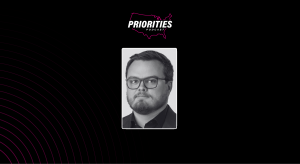Pennsylvania begins shared services phase of decades-long consolidation

After decades of work, Pennsylvania’s state IT leaders are now looking at the final phase of a broad consolidation effort.
The government is planning to pool roughly 3,000 technology, security and human resources employees, who currently are spread across 38 agencies, into seven groups. Officials estimate the organizational change will eliminate a lot of duplicative work, while ultimately enabling opportunities for shared IT services and making headway against a $600 million statewide revenue deficit.
It’s part of a process that began with consolidation of the state’s data centers in the early ’90s. The latest project, scheduled to begin implementation July 1, is expected to be a 12- to 24-month project. While state technology leaders are enthusiastic about the anticipated upside, an internal announcement distributed to agency heads is sure to generate anxiety among staff — some of whom have been doing things the same way since before any of this even began.
Will any employees lose their jobs?
Will employee job responsibility change?
Will my supervisor change?
These are a few of the questions found in that document and there’s not much comfort to be found in the answers provided, which are: maybe, sometimes, and possibly.
State Deputy Chief Information Officer Rosa Lara said a big part of this transition is finding ways to help employees with the sense of loyalty and identity they’ve established working at their respective agencies. People are drawn to government service by the mission, not necessarily the pay, she said, and that reality will figure prominently in the “messaging” during the transition.
Through the creation of seven new groups, each of which is centered around a function — like consumer protection, public safety, or conservation and environment — some semblance of a worker’s identity can be maintained, but Lara admits that part of the restructuring will require a change in mindset by many.
“Part of this process is to have employees think bigger about what they’re doing and to not fully focus on what their agency needs to achieve but how do we step back and try to solve the problems in a bigger way so that we make long-lasting change that’s in the best interest of the commonwealth,” she said.
And ultimately, this will be better for Pennsylvania, she said, calling the shared services project a “complete solution” to the state’s version of the dreaded IT silo problem.
“We went from having completely disparate IT organizations and separate email instances and data centers, and over time, we’ve continued to converge as best we can over the past two decades,” she said. “We have many enterprise solutions, but the last piece that we’ve not consolidated is the people — the organization — so this is the last step of that process to kind of make our operating model as efficient as possible.”
Pennsylvania follows about two dozen other states that have pursued a shared services model. Lara said the state has consulted with Michigan, Maryland, Tennessee, Indiana, Utah, New York, and will soon speak with officials in Vermont, a state soon to start a similar process.
Though Pennsylvania is just two months into its planning for shared services, state Chief Information Officer John MacMillan identified early the importance of adopting ISO standards to provide a framework for their plans, Lara said.
“When we’re disagreeing on how things should be done, it’s very easy to look to ISO to look as the best case way we should do this,” she said.
Still early in the planning stages, Pennsylvania’s IT personnel consolidation is just one piece of a larger portfolio of agency restructuring happening under Gov. Tom Wolf, including the consolidation of four health-focused state departments.
As the project advances, an image of shared services and a completion of the state’s IT consolidation will come into focus, Lara said. Through meetings with other states, Pennsylvania officials compiled a list of lessons learned, which they shared with StateScoop:
- Establish a PMO-like command center to manage the transformation.
- Implement transformation in stages.
- Establish a communication plan throughout transition.
- Leverage chargeback model versus transfer of funds to state IT office.
- Accept that the transition will be rocky.
- The governor’s office needs to visibly support the initiative.
- Focus on impact to the business.
- Focus on process in addition to organizational design.
- Executive buy-in from the top was critical to the success of the initiative.
- Follow the chain-of-command when communicating about the initiative.
- Establish champions in each agency.
- Ensure budget and finance staff are involved from the start
- Establish a mechanism to track metrics early.
- Executive support is critical. Effort needs to be devoted to keeping executive sponsors engaged and ensuring they are familiar with the benefits of the project, e.g., faster hires, lower staff costs, etc.
- It is helpful to reassign staff from their current agency as a means of ensuring they do not cling to established ways of doing business. Also, it’s important to establish the new organizations quickly so that staff can quickly make the transition to a new way of doing business.
- Agencies are not permitted to opt out — one HR service delivery system for consistency and efficiency.
- Focus upon establishing Service Level Agreements (SLA) and not Memoranda of Understanding (MOU). The MOUs required too much renegotiation. Walking through specific service scenarios was helpful with determining SLA criteria and measures.
- One state did not utilize a “one size fits all approach” to staffing within agencies and field sites. Staffing levels were based on upon workload.
- MOUs establish what authority agency heads retain in the face of HR consolidation, so that emphasis is not upon what the agencies give up with HR consolidation.
- Different agencies have different work rules based on operational needs — it helped to have some HR staff local to maintain that awareness/understanding.
- SLAs are not metric-driven — focus upon broader outcomes to avoid quibbling over numbers. Once the appropriate data systems are in place, shift to greater use of metrics.
- SLAs are treated as living documents, adjusted periodically to reflect new or revised processes, new service requirements, etc.
- One state underestimated the resistance from HR staff, and recommended making changes to agency HR staff assignments — loyalty to current agency and current HR practices prolonged the transition to a new culture.
- Standardized work processes, defined service expectations, and then moved quickly to implement. Staff were either reassigned or demoted. Moved quickly so as not to prolong the discomfort that came with all the change.

This story was featured in StateScoop Special Report: Legacy Modernization (2017)






